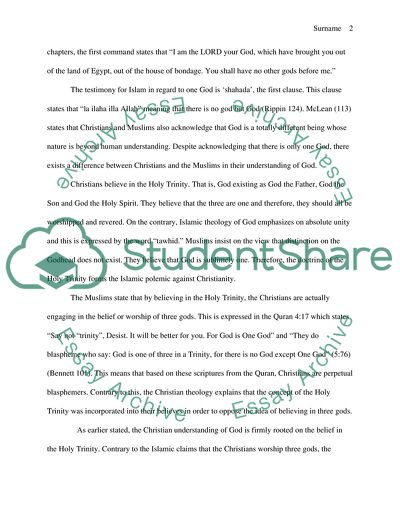Cite this document
(Characteristics Evident in Christianity and Islam Report Example | Topics and Well Written Essays - 2250 words, n.d.)
Characteristics Evident in Christianity and Islam Report Example | Topics and Well Written Essays - 2250 words. https://studentshare.org/religion-and-theology/1755241-ompares-and-contrasts-two-specific-characteristics-that-are-evident-in-two-modern-religious-faiths
Characteristics Evident in Christianity and Islam Report Example | Topics and Well Written Essays - 2250 words. https://studentshare.org/religion-and-theology/1755241-ompares-and-contrasts-two-specific-characteristics-that-are-evident-in-two-modern-religious-faiths
(Characteristics Evident in Christianity and Islam Report Example | Topics and Well Written Essays - 2250 Words)
Characteristics Evident in Christianity and Islam Report Example | Topics and Well Written Essays - 2250 Words. https://studentshare.org/religion-and-theology/1755241-ompares-and-contrasts-two-specific-characteristics-that-are-evident-in-two-modern-religious-faiths.
Characteristics Evident in Christianity and Islam Report Example | Topics and Well Written Essays - 2250 Words. https://studentshare.org/religion-and-theology/1755241-ompares-and-contrasts-two-specific-characteristics-that-are-evident-in-two-modern-religious-faiths.
“Characteristics Evident in Christianity and Islam Report Example | Topics and Well Written Essays - 2250 Words”. https://studentshare.org/religion-and-theology/1755241-ompares-and-contrasts-two-specific-characteristics-that-are-evident-in-two-modern-religious-faiths.


